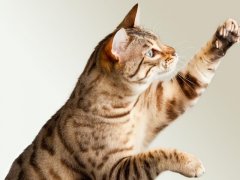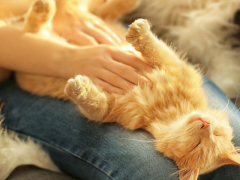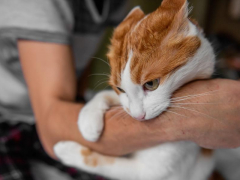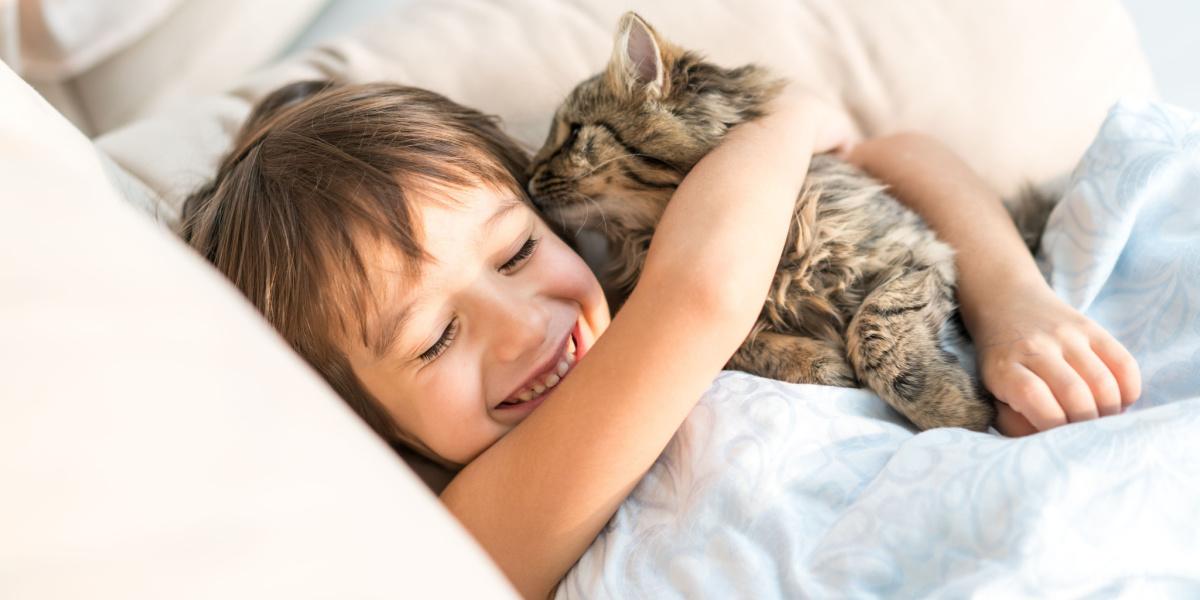
If you share your life with cats, you’ll know that most spend a lot of time grooming themselves, but you may have also noticed your cat licking other objects, animals, or even you!
Not content with licking their human companions’ skin, some cats develop the habit of licking our hair, too. Although this licking behavior can seem a little odd, in the vast majority of cases it is a sign of affection and should be taken as a compliment.
In this article, we will discuss grooming in cats, why they may start licking human hair, how to discourage this habit if necessary, and whether there are any health concerns to be aware of.
Terrific Tongues
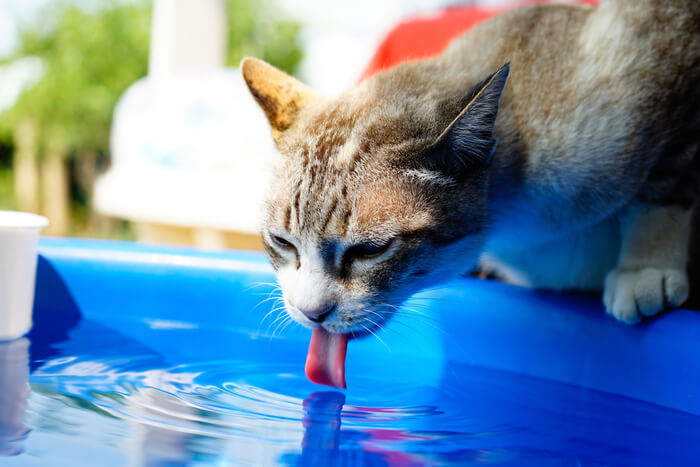
A cat’s tongue feels rough because it is covered in hundreds of small backward-facing barbs (spines) .
If your cat starts licking your hair you will notice it is not the most pleasant sensation because cats’ tongues are rough and abrasive (making them feel like sandpaper). It is also likely that your hair (especially if it is long) seems to catch on your cat’s tongue.
This is because a cat’s tongue is covered in hundreds of small papillae—small, backward-facing barbs (spines) made out of keratin. Keratin is the same tough substance that claws and fur are made out of.
These papillae help cats remove loose hairs, dirt, stale oil, and parasites as they groom themselves. A fascinating study has demonstrated that cats’ tongue papillae are shaped like scoops and have hollow tips; these absorb saliva and distribute it onto the hair coat and right down to the skin surface during grooming. Not only does this help cleanse the skin and remove tangles in the fur, but it also helps to control the cat’s temperature.
Also Read: Why Are Cats’ Tongues Rough?
Normal Cat Grooming Behavior
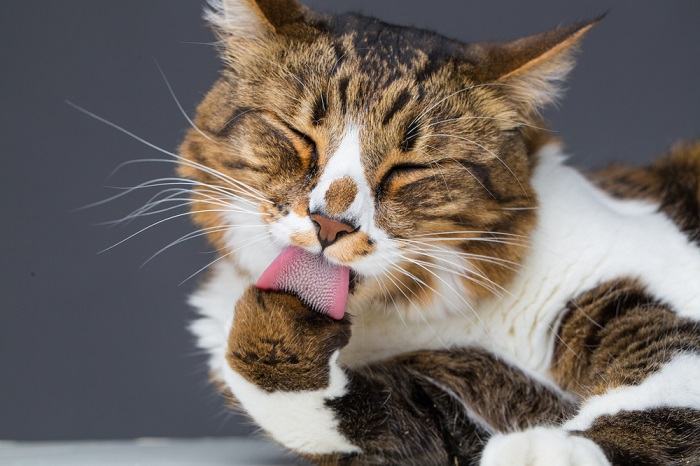
Grooming by licking—self and others—is a normal feline behavior.
Self-care is very important in the feline world. Some sources estimate that cats spend up to 50% of their waking hours grooming themselves! Many cats also groom other cats in their household. So, where does this behavior come from, and can it explain why they may start licking our hair, too?
Mother cats lick their kittens immediately after birth, an instinct-driven behavior to remove the smells and tissues that may attract predators. Mom cats continue to lick their kittens over the following weeks, which stimulates them to go to the toilet, keeps them clean, and removes pesky parasites like fleas. By the age of 4 weeks, kittens start to take over the job and begin to groom themselves.
Also Read: The Complete Feeding Guide From Kittens To Seniors
Why Do Cats Lick Each Other?
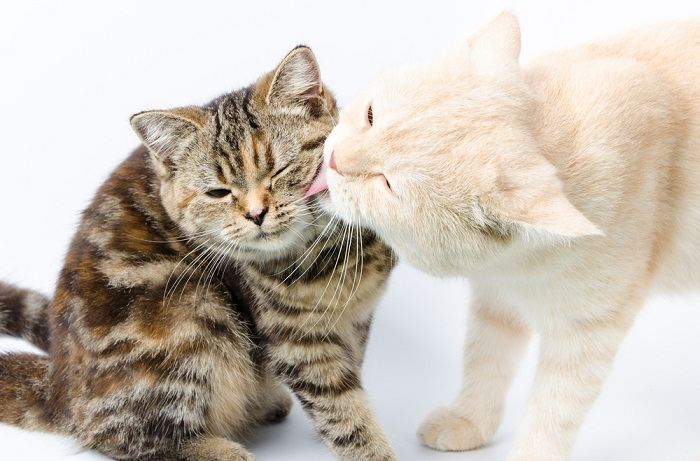
Social grooming, called allogrooming, is an important part of bonding.
Many species of animals partake in social grooming; allogrooming is a specific term to describe two individuals of the same species grooming each other. Allogrooming in cats usually focuses on the head and neck area, and is thought to enhance social bonds.
Despite cats’ amazing flexibility, the head and neck are the hardest areas for them to groom themselves, so one theory is that allogrooming is simply helping their buddies to clean the hard-to-reach places.
However, the head and neck area in cats also contains multiple scent glands that secrete pheromones. Licking and rubbing these areas allows cats to spread scents, which help to mark and reaffirm members of their “pack,” and identify friendly individuals.
One study into the function of allogrooming in domestic cats showed that higher ranking (more dominant) cats usually groom lower ranking kitties and that it was not uncommon for there to be agonistic (unpleasant) behavior associated with allogrooming. This potentially shows that cats can use grooming as a way of avoiding overtly aggressive behavior and conflict (by displaying their dominance in another way).
Also Read: Why Do Cats Lick You?
So Why Does My Cat Lick My Hair?
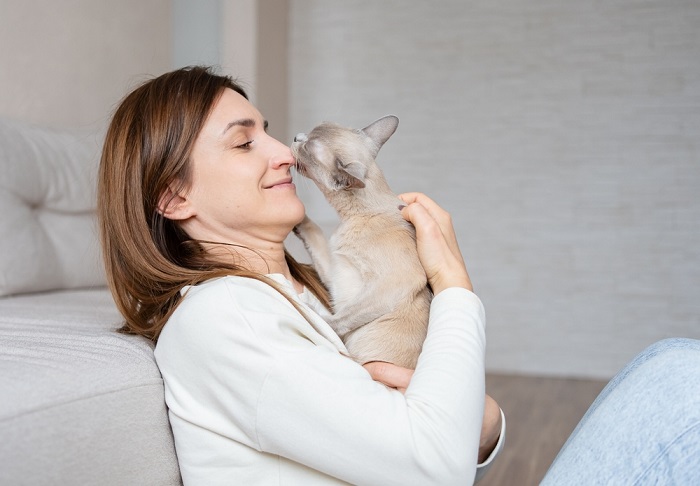
Cats groom the heads and necks of their preferred associates and friends—that includes you!
From what we have discussed so far it would appear that the most likely reason for your cat to be licking your hair is to display affection and enhance their social bond with you by sharing their scent.
Cats groom the heads and necks of their preferred associates and friends. It might also be that they enjoy the attention that you give them in response to their hair-licking behavior, especially if you stroke and rub their heads in return.
Some people describe their cat licking their hair just after they have showered. These cats might want to re-establish their scent on their freshly washed family member, or it could be that they are attracted to the smell of any hair products used.
Most of us will have seen the extreme reaction some cats show to catnip. As it turns out, mint is from the same family of plants. If your shampoo or conditioner is mint-scented this may be the reason your cat is trying to lick and rub your hair.
Sometimes cats start to groom themselves more than normal (overgrooming). This can have a variety of causes including:
- Parasites (like fleas and mites)
- Allergies
- Infections
- Pain
- Underlying medical conditions
- Stress and anxiety
Signs of overgrooming can include sore skin, patches of broken or missing hairs, and your cat spending more time than normal licking, chewing, biting, and scratching themselves. If your cat is overgrooming itself, they may extend this behavior to grooming you more too, especially if the behavior is caused by stress. Your veterinarian will be able to give you more help and advice in these often-complex cases.
Also Read: What Can You Give A Cat For Pain? 6 Vet-Recommended Options
Should You Let Your Cat Groom Your Hair?
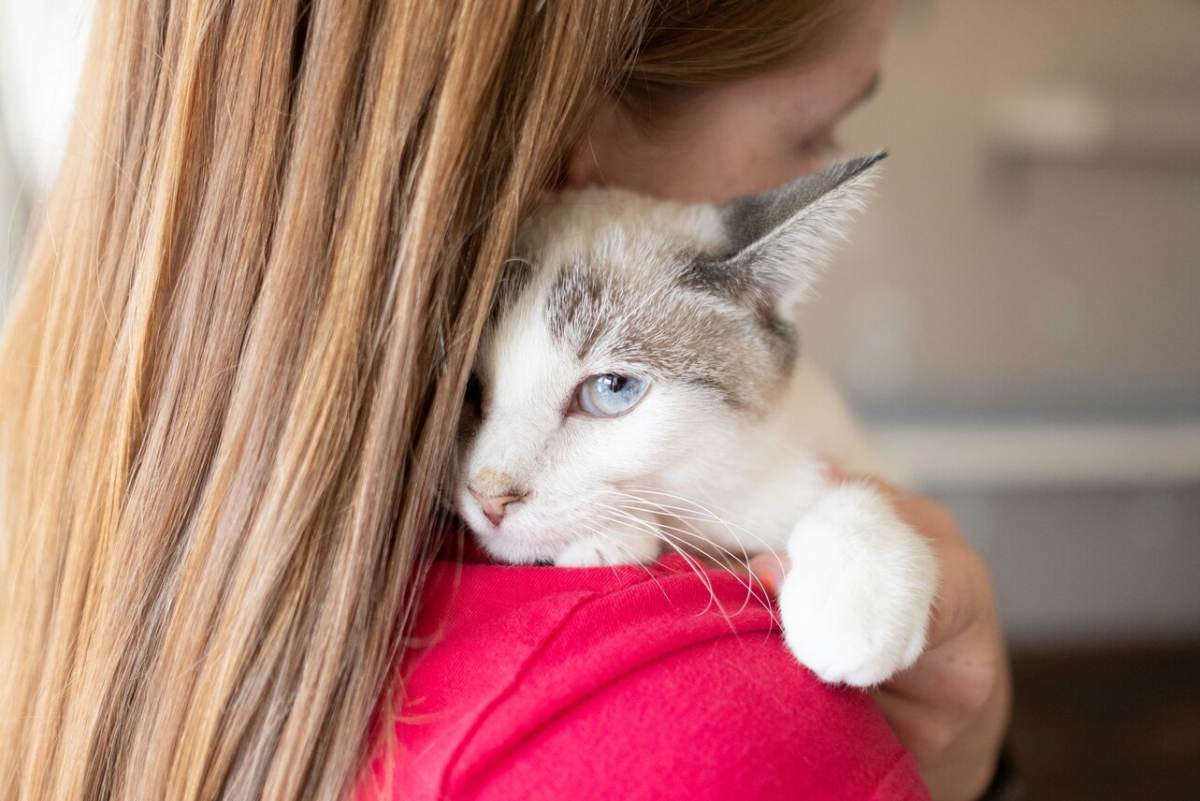
Licking human hair doesn’t usually carry any health concerns as long as you don’t use hair or skin products that contain ingredients that are dangerous for cats.
As long as none of the products used on your hair or skin are toxic to cats, there aren’t usually any health concerns from them licking human hair.
It is a different matter if they are eating your hair though, as the different length and structure of human hair might lead to large hairballs forming in the cat’s bowel. These hairballs may be passed out in the feces or vomited up, but can lead to intestinal blockages and result in the need for urgent surgery to remove them.
Eating hair could also be a rare form of pica in cats, which is the ingestion of non-food items (e.g., wool, fabric, wood, paper, and cat litter). There are many causes for pica, and you should seek help from your veterinarian to find the cause and solution.
Also Read: The 6 Best Cat Foods For Hairball Control
How To Stop Your Cat Licking Your Hair
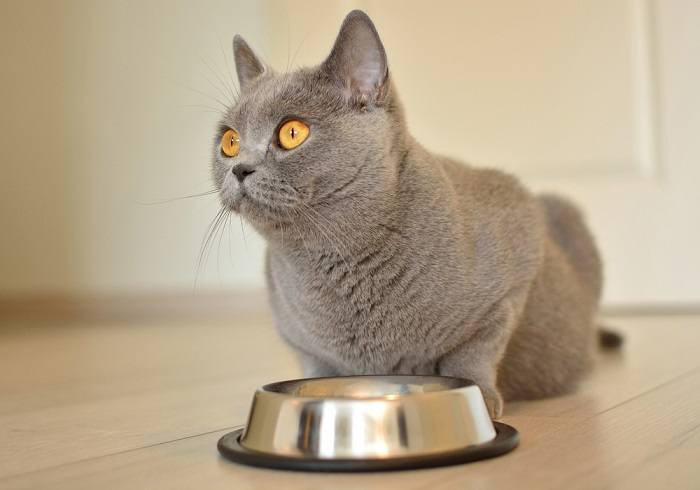
If you don’t enjoy it when your cat licks your hair, try distracting your cat with something else like play time.
On the whole, hair licking is not likely to cause your cat any issues, but many people would prefer not to have cat saliva spread through their hair, no matter how much they love their feline companions! So how do you discourage your cat, while still maintaining the special bond they are trying to reinforce?
If you are using a mint-scented hair product, swap it for a different one. You could consider a scent that cats don’t like, such as citrus. Try distracting your cat with something else, so that you are still interacting and bonding but in a different way (e.g., playing with toys).
Some people use food as a distraction, but take care not to inadvertently reinforce the unwanted behavior. Cats are super smart, so they will soon associate licking your hair with getting a treat—which might make them do it even more!
If these tactics aren’t working, you could try completely ignoring your cat when they lick you: get up and leave the room, and don’t pet them or give them any attention until they get the message to stop. As with the treats, getting any extra attention when they lick your hair may only make cats do it more.
Give your cat plenty of other outlets to use their mouth and tongue. Puzzle feeders, toys, and cat grass to chew on are all ways of enriching your cat’s environment and redirecting their behavior.
Never punish or shout at your cat for licking your hair. This will not solve the problem and will cause them stress and anxiety, potentially leading to behavioral issues and even aggression.
Also Read: The 10 Best Cat Slow Feeders & Puzzle Feeders
Final Thoughts
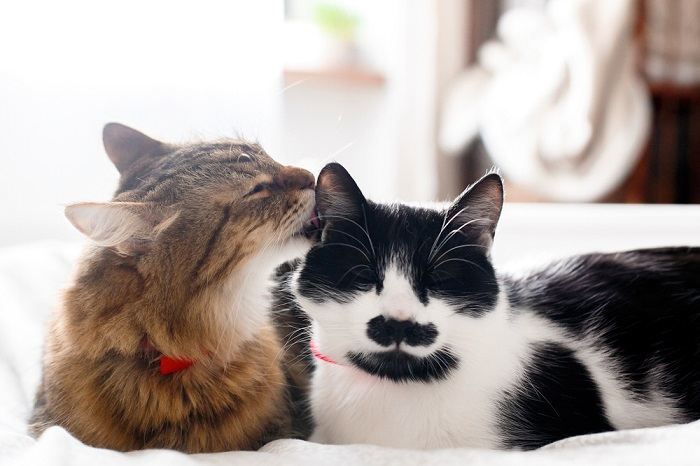
Some cats extend this behavior to their human companions by licking parts of their bodies, which can include their hair.
Most cats are fastidious groomers, and spend a lot of time keeping their skin and fur meticulously clean. Grooming is also very important socially to cats, and allogrooming (two cats grooming each other) is commonly seen in multi-cat groups as a method of enhancing social bonds and exchanging scents.
Some cats extend this behavior to their human companions by licking parts of their bodies, which can include their hair. It is usually a sign that you are an important person in their life, though in other cases it may just be that they love the scent of your hair products (especially if they are mint based)!
Although there is usually little to worry about as long as the cat isn’t actually eating the hair, many people prefer to gently discourage the habit by changing shampoo, ignoring the behavior, or distracting their cat with toys or treats.
Also Read: How To Give A Cat A Bath
-
Eckstein, R.A., Hart, B.L. The organization and control of grooming in cats. Applied Animal Behavioral Science 68(2):131-140
-
Van den Bos, R. The function of allogrooming in domestic cats (Felis silvestris catus); a study in a group of cats living in confinement. J. Ethol. 16, 1-13 (1998)
-
Hillspet.com
-
icatcare.org
-
www.petmd.com
-
https://www.pnas.org/doi/10.1073/pnas.1809544115vet.cornell.edu

